Social Studies
Pathways
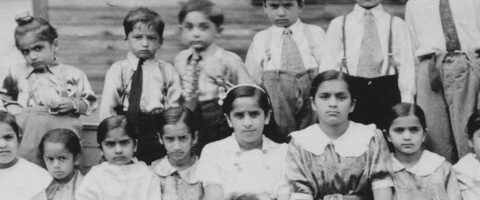
Learn about this extraordinary community on Vancouver Island, established in 1917 by a man named Mayo Singh.
View Pathway
This pathway examines the displacement and dispossession of thousands of Japanese Canadians in Canada in the 1940s.
View Pathway
1In 1 playlists
This pathway is connected to the exhibition Hope Meets Action: Echoes Through the Black Continuum. The exhibition and pathway explores the connections between historical and contemporary Black experiences throughout BC.
View Pathway
2In 2 playlists
British Columbia today is both a constitutional monarchy and a parliamentary democracy, which means that British Columbians elect people to represent them at the provincial legislature. These elected representatives are called members of the legislative assembly (MLAs). Each MLA represents a different area, called an electoral district or a constituency. It is their job to…
View Pathway
To celebrate its 100th anniversary, the Dominion Astrophysical Observatory (DAO) partnered with Royal BC Museum. Discover how this place of science helped the world understand astronomy and our place in the universe.
View Pathway
5In 5 playlists
The Royal BC Museum and BC Heritage Fairs both work to engage youth with BC’s history. Find out how and be inspired by student projects in this pathway.
View Pathway
2In 2 playlists
This pathway is especially for teachers who want to use object-based learning in the classroom. Includes lesson ideas and online support.
View Pathway
1In 1 playlists
L’histoire de la Colombie-Britannique est remplie de récits de famille — des familles de toutes les formes et de toutes les tailles ; des familles établies ici depuis des milliers d’années, des familles venues ici des quatre coins du monde. Ensemble, nous contribuons à la diversité de notre province.
View Pathway
3In 3 playlists
British Columbia’s history is filled with stories of families—families of all shapes and sizes; families that have been here for thousands of years and families that have come from almost everywhere in the world. Together, we shape our diverse province. (Grades 9-12)
View Pathway
1In 1 playlists
Every family has a unique and special story. At the Royal BC Museum we have lots of stories—and histories—about British Columbia families. Come and explore! (Grades K-3)
View Pathway
7In 7 playlists
Explore interviews from the Centre for Indo-Canadian Studies at the University of the Fraser Valley. Learn more about the experiences of early Punjabi immigrants to Canada.
View Pathway
6In 6 playlists
How do we reconcile past wrongs? Look at documents and objects from the Royal BC Museum’s ethnology collection and archives to learn about the effects of Indian residential schools and think about how we can reach reconciliation.
View Pathway
9In 9 playlists
Every picture tells a story, but whose story? How can a single picture tell us a story about what happened long ago? To answer these questions historians have developed some thoughtful ways to read photographs.
View Pathway
5In 5 playlists
Look into documents and artifacts from the Royal BC Museum and Archives to uncover how the Chinese Canadian community was treated in BC’s past.
View Pathway
8In 8 playlists
Did you know that there has been a connection between China and BC for over 225 years? Explore the Royal BC Museum and Archives and use our collections to find out more about early Chinese Canadian history.
View Pathway
6In 6 playlists
Oral history recordings are like time machines. They transport us to the past and help us learn about the people and places of British Columbia. They are uniquely personal accounts of the past from the people who actually lived it. What can you discover about British Columbia’s past by listening?
View Pathway
3In 3 playlists
It’s been more than 100 years since the beginning of the First World War. How can we now use artifacts, documents, and other primary sources to understand what life was like for people during this part of BC’s past?
View Pathway
1In 1 playlists
Jack Webster was a well-known British Columbian journalist. BCTV donated all of the Webster! episodes to the Royal BC Museum. What will you discover about BC's recent past from the Jack Webster collection?
View Pathway
5In 5 playlists
We're all in this together. An ecosystem is a natural community. When species disappear it can throw an entire system off balance, with far-reaching consequences for ecosytems, for the planet, and for us. What can we do about it?
View Pathway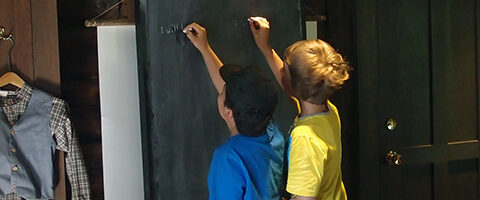
1In 1 playlists
Explore the rich history of the people who learned and taught in St. Ann's Schoolhouse.
View Pathway
6In 6 playlists
In 1858 word of gold rang out in the Fraser Canyon, setting off a dramatic migration of people and propelling this once remote region of western North American into the modern age. What can you discover about BC's gold rush?
View Pathway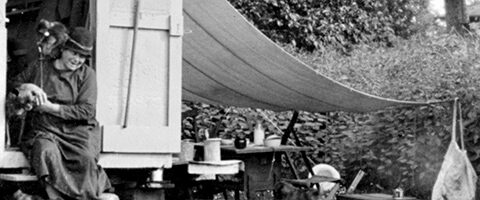
3In 3 playlists
Emily Carr is British Columbia’s most famous artist, but she was also a colourful woman who lived a life full of adventure. Learn about Emily’s love of animals and explore her life through some of the museum’s vast Emily Carr collection.
View Pathway
7In 7 playlists
Did you know BC is a language hotspot? Over 34 distinct indigenous languages are spoken here. Explore sounds, images, words and video about First Nations languages.
View Pathway
2In 2 playlists
Canada’s oldest Chinatown is in Victoria, BC. The Royal BC Museum exhibition Tradition in Felicities used video, photographs and the written word to celebrate the community of this national landmark. Teachers look for lesson plans in Watch!
View Pathway
7In 7 playlists
Documentary film and photographic images held in the BC Archives help us to remember the First World War. Watch video, see photographs and read about the war sometimes called The Great War.
View Pathway
5In 5 playlists
American botanist Mary Gibson Henry collected plants in northeastern BC in 1931. Her pioneering journey was recorded on film. Lucky for us, BC Archives has a copy.
View Pathway
1In 1 playlists
The role of the British Crown in Canada is mainly ceremonial, but the lieutenant-governor still plays a key part in the governing of British Columbia.
View Pathway
2In 2 playlists
Archaeology tells us that Indigenous people have been here a very long time. Evidence such as artifacts, house remains and animal bones are held in the Royal BC Museum collection.
View Pathway
1In 1 playlists
You might be surprised at what a seemingly simple piece of paper can reveal. The BC Archives holds paper documents such as birth, marriage and death certificates. These and other records are important resources for family history researchers.
View PathwayEntries
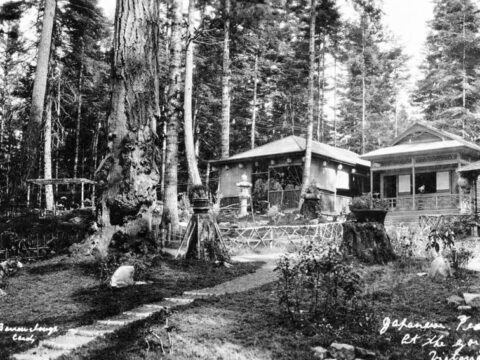
1In 1 playlists
Hayato Takata and Yoshitaro Kishida opened the garden on July 11, 1907. Two Takata brothers started to run the garden as a family business in 1922. The Takata family was interned in 1942. Their houses and the garden were vandalized and destroyed. The rest of their belongings were sold off by the government. [BC Archives-E-01902] Learn more about this image at BC Archives here.
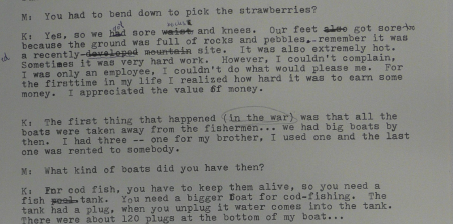
1In 1 playlists
Hideo Kokubo was interviewed in Vancouver in 1973 in a project by Reynoldston Research and Studies. He discusses life as a fisherman in BC in the 1940s and mentions how the government seized Japanese Canadian fishing boats during the Second World War. [BC Archives-AAAB8584] Learn more about this interview at BC Archives here.

1In 1 playlists
The owner of the Ikeda Mine, Arichika Ikeda, died in 1939 but the ownership of his mine came under the jurisdiction of the Custodian in 1942. His wife, Kaoru Ikeda, interned in Slocan, was made to release her rights to the property as well as their family house. She died after four years of internment in the spring of 1946. [BC Archives H-04580] Learn more about this image at BC Archives here.
Media

Families Primary Module
Read
Tips for Teachers – Teaching: Using Historical Photographs in the Classroom
Read
Classroom Mapping Activity
Read
Apprentissage par l’observation d’objets (FR)
Read
Tradition in Felicities Secondary Lesson Plan1
Read
Tradition in Felicities Elementary Lesson Plan
Read
Québec Sovereignty and Primary Source Investigation FINAL (EN)
Read
Souveraineté du Québec et recherche de sources primaires (FR) FINAL
Read
Gold Rush of BC
Read
Families Secondary Module
Read
Gold Rush! Educator Resource Guide
Read
Helmcken Old Fashioned Christmas
Read
A Century Ago
Read
Penser comme un historien
Read
Leaders in their Communities FINAL
Read
Firsts FINAL
Read
Families
Read
Indigenous Languages Primary Lesson Plan
Read
Vocabulary
Read
color-value-scale-worksheetn_900
Read
Exploring Concepts of Immigration and National Identity through Art
Read
History in Perspective
Read
Exploring Concepts of Immigration and National Identity through Art
Read
Tips for Teachers – Teaching
Read
Punjabi Secondary Lesson Plan
Read
Punjabi Elementary Lesson Plan
Read
Mot Croisé Archéo (FR)
Read
Apprentissage par l’observation d’objets (FR)
Read
Plantes Indigènes (FR)
Read
Plan de leçon niveau secondaire
Read
Plan de leçon niveau intermédiaire
Read
Middle School Lesson Plan
Read
High School Lesson Plan
Read
Plan de leçon 100 objets d’intérêt
Read
Leçon 2 Les collections, la citation d’un objet et la créativité
Read
Observations et inférences teacher handout
Read
Leçon 2 Handout
Read
Leçon 4 L’interconnexion de notre histoire
Read
Leçon 3 La traduction et les musées
Read
Leçon 1 Explorons le musée
Read
Leçon no2
Read
Leçon no1
Read
Our Roots Are Here
Read
FINAL_FR_Our Roots Are Here(1)
Read
Un conte au temps de la COVID
Read
Observer de près : Fiche d’analyse d’une photographie
Read
Observer de près
Read
Vocabulaire teacher handout
Read
Vocabulaire student handout
Read
Observations et inférences student handout
Read
100 Objets d_Intérêt Handout
Read
Leçon 4 Handout (Long)
Read
Leçon 1 Handout
Read
Grille d’évaluation niveau intermédiaire
Read
Middle School Rubric
Read
Apprentissage par l’observation d’objets (FR)
Read
Archaeology-Fieldwork-Crossword-EN
Read
Mot Croisé Clé FR
Read
Mot Croisé Archéo FR
Read
Crossword Answers
Read
Leçon no2
Read
Leçon no1
Read
First Peoples Histories and Timeline in BC
Read
First Peoples’ Innovations and Technology FISHING WEIRS
Read
Mot Croisé Archéo (FR)
Read
Mot Croisé Clé (FR)
Read
Mot Croisé Archéo (FR)
Read
Crossword Answers (EN)
Read
Archaeology Fieldwork Crossword (EN)
Read
Gold Rush Worksheet
Read
Copy of First Peoples’ Innovations and Technologies in BC Vocabulary
Read
National Aboriginal Veterans Remembrance Day Backgrounder
Read
Orcas Debate Activity
Read
LP Activity Plan Debate.docx
Read
Truth and Reconciliation Lesson Plan
Read
Punjabi Lesson Plan Grades 9-12
Read
Punjabi Lesson Plan Grades 2-8
Read
Family Secondary Lesson Plan
Read
Nos racines sont ici
Read
FN_FINAL Family Secondary Lesson Plan
Read
Truth and Reconciliation FINAL Lesson Plan
Read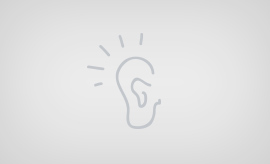
Wonson And Quinn
Listen
Quinn and Wonson Barkerville
Look
Object-based Learning Activity Final
Read
Chinese Legacy in BC
Read
Our Roots Are Here
Read
Families_Secondary_0509
Read
Writing on the Wall Teacher’s Guide
Read
Secondary School lesson plan
Read
Elementary School lesson plan
Read
Residential Schools Reading List
Read
Thinking like a Historian: Reading Historical Photographs
Read
Looking Closely: Photo Analysis Worksheet
Read
Tips for Teachers: Using Historical Photographs in the Classroom
Read
Material Evidence Trailhead styled v3
Read
Teacher Resource Call Went Out
Read
EDITED_READBecoming an Oral Historian
Read
Changing Landscapes Trailhead styled
Read
TeacherGuide_ACenturyAgo
Read
Rules and Regulations
Look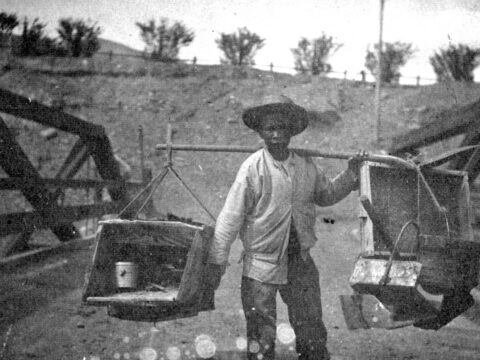
Prospector
Look
Lesson plan for Tif video elementary
Read
